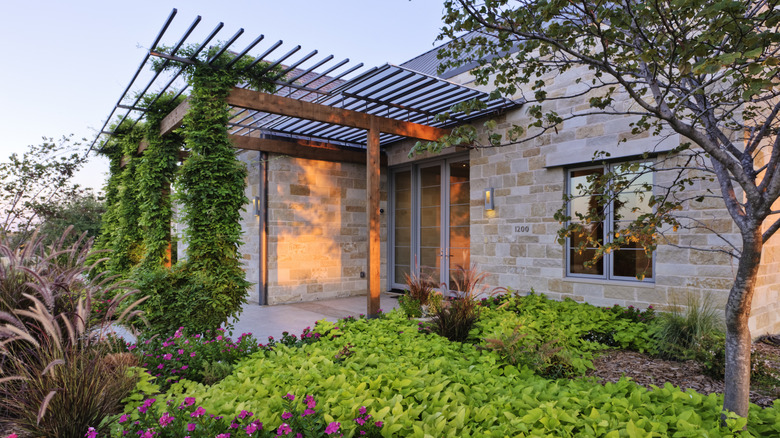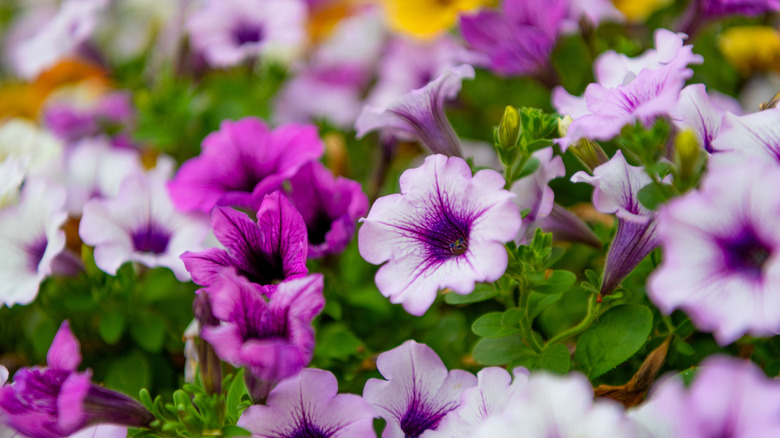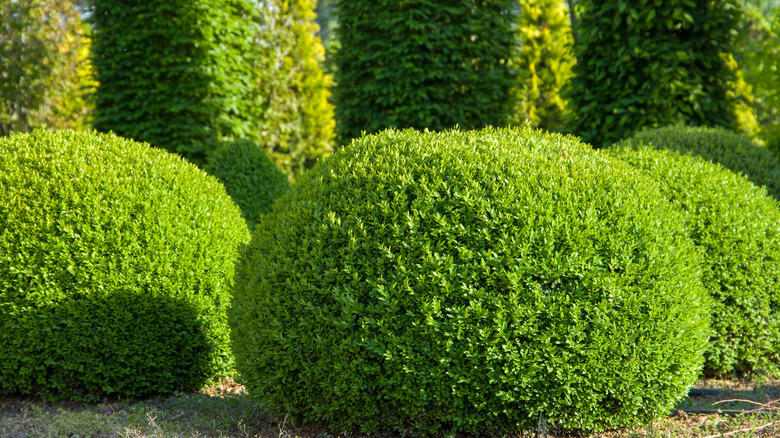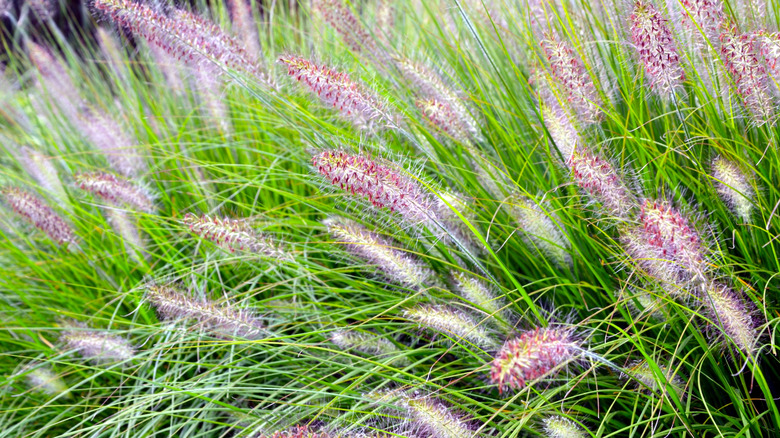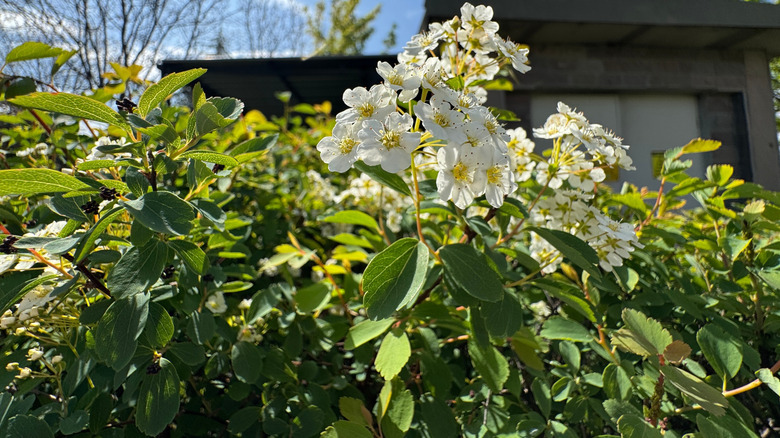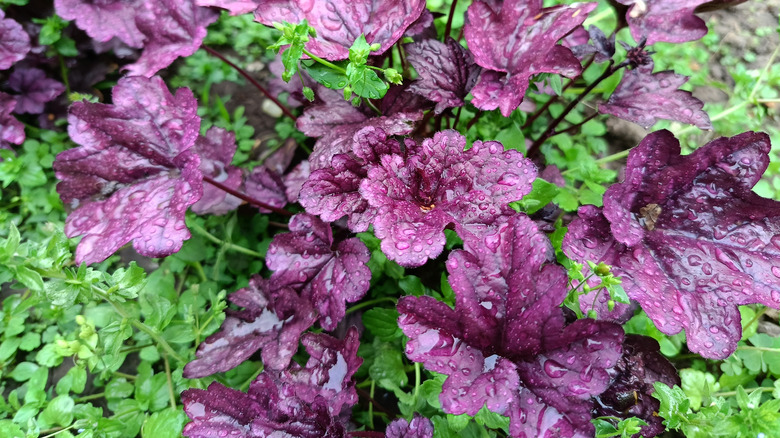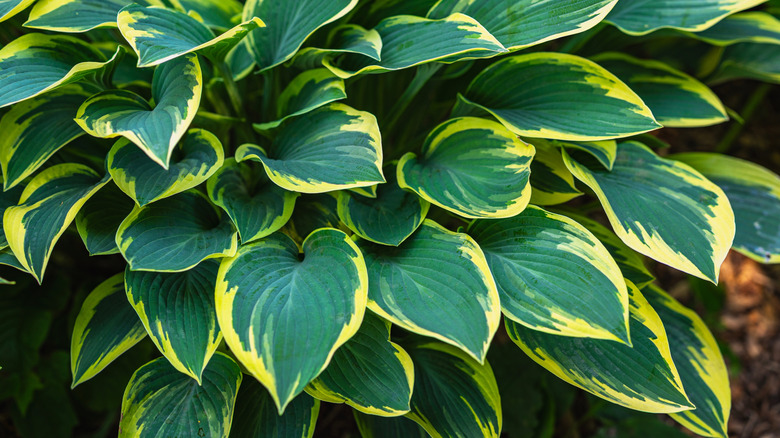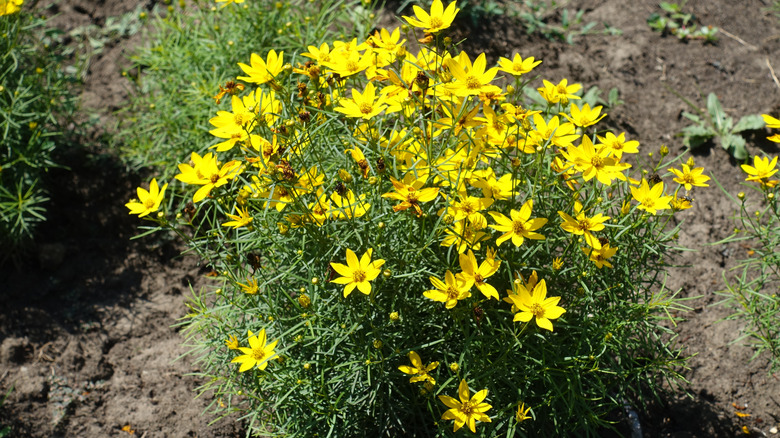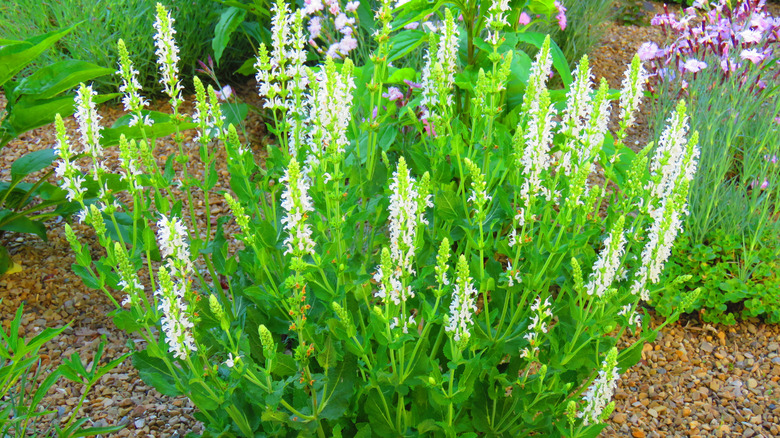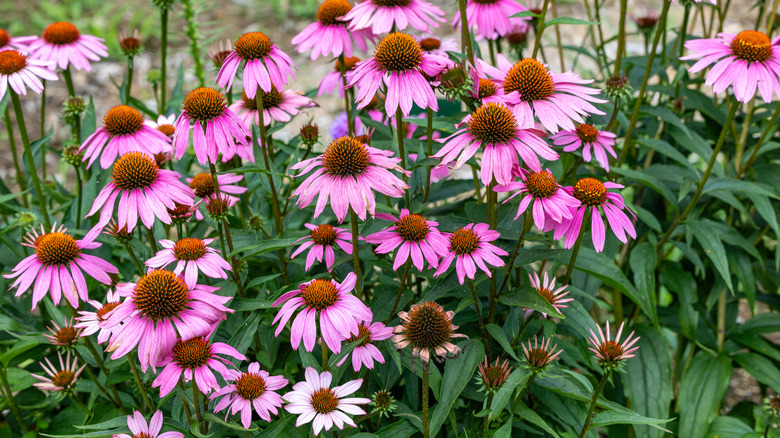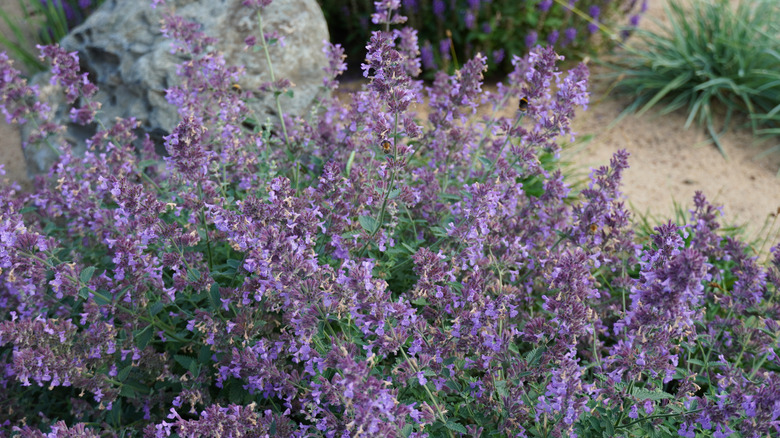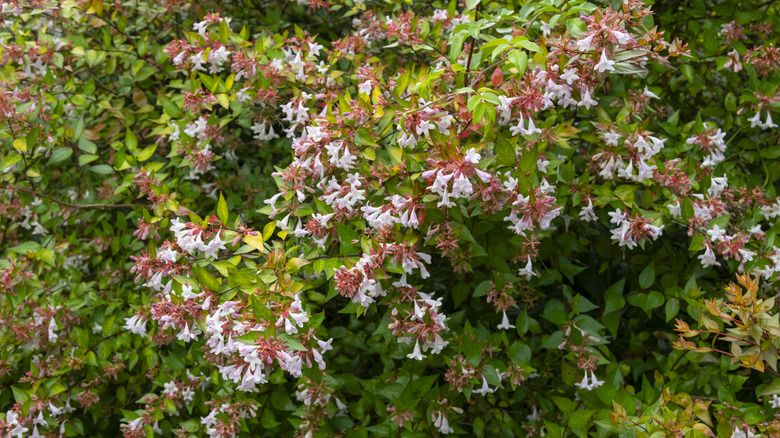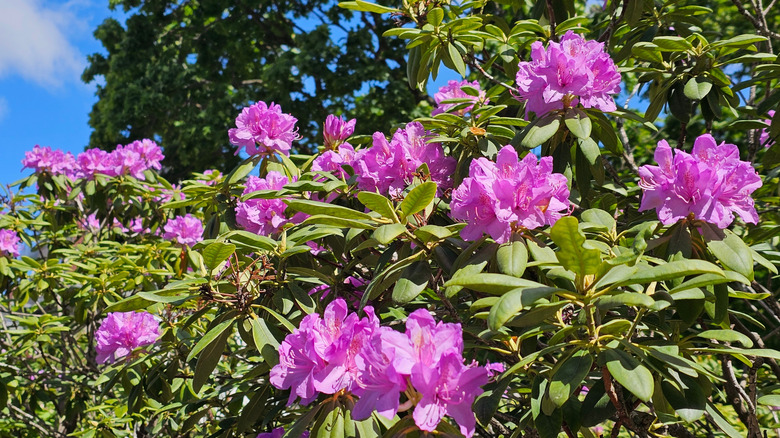12 Plants That Are Perfect For Planting Right Up Against Your Foundation
Planting close to your home's foundation might not seem like the best idea, but it's actually a golden opportunity to frame your home's best features and create lasting color throughout the seasons — but the kind of plant you grow matters. Not every plant belongs near siding or under your windows, but plenty of options do thrive in that space where structure meets soil, which deserves more than a few scattered shrubs your home came with. Think dwarf sizes, low-maintenance, and foundation-friendly. With the right picks, plants can soften harsh architectural lines, highlight entryways, and create a welcoming transition between house and garden.
When searching for low-maintenance ways to landscape your yard and boost curb appeal, planting near your home's foundation might be the easiest. Look for ones that won't outgrow their space, fit the scale of your house — like small varieties for tight spaces, taller ones where there's room — and that complement its architectural style. For example, the height of a plant can frame windows and entryways. To have pretty foundation beds surrounding your home all year, mix evergreens, seasonal bloomers, and structural plants. Low-growing evergreens like boxwood or inkberry offer structure and look tidy without much upkeep. Flowering shrubs, like spirea, abelia, or dwarf azaleas, bring seasonal color without overpowering the space, while ornamental grasses offer texture and movement to sunny spots. Whether starting from scratch or refreshing an outdated landscape, foundation planting is a chance to highlight your home in greenery, texture, and color.
Petunia
Petunia (Petunia Juss.) annuals are our top pick for USDA Zones 10 to 11, and here's why: A showy, low-growing option, petunias thrive in full sun and well-drained soil, adding copious amounts of blooms to your landscape from spring through fall. They're excellent for filling gaps between companion plants, like perennials or shrubs, and can soften hard edges near walkways or entryways. Regular deadheading keeps them looking fresh and encourages nonstop blooms in an array of colors.
Boxwood
A favorite for its prized for its tidy appearance, evergreen foliage, and year-round structure, boxwood (Buxus L.) shrubs are perfect for defining entryways, walkways, or plant beds in USDA Zones 5 to 9. Although there are plenty of ways to use boxwood plants for backyard privacy, these perennial shrubs can look ornamental when surrounding your foundation. Boxwood easily tolerate pruning, making it easy to shape into spheres, rectangles, or other natural forms.
Chinese fountaingrass
When you want billowy movement around your foundation, Chinese fountaingrass (Pennisetum alopecuroides) has you covered. The ornamental grass features arching foliage, topped by soft, bottlebrush-like plumes that sway in the breeze. Hardiest in USDA Zones 5 to 9, Chinese fountaingrass thrives in full sun and will bring all the pollinators to your yard. The added texture and movement will make your landscape stand out from your neighbors.
Spirea
Spirea (Spiraea L.) perennials are easy, fast-growing shrubs in USA Zones 4 to 8, and are a favorite for bringing color and texture closer to your house. These plants thrive in sunshine, so they may not show off their pretty blooms if you plant them in the shade. They tolerate heat and drought conditions like the champs they are and make excellent companion plants with other shrubs and perennials. It's important to know when to prune them to keep blooms looking their best.
Coral bells
Coral bells (Heuchera L.) are a vibrant and versatile perennial for USDA Zones 3 to 9. Known for brightly colored foliage — from deep burgundy to lime green and silvery tones — coral bells bring a pretty arrangement to both shaded and sunny spots. Their compact size helps fill gaps without taking over. The shrub produces little bell-shaped flowers start in June, attracting oodles of pollinators. Coral bells look great with hostas, ferns, or dwarf shrubs.
Plantain lily
The plantain lily (Hosta Tratt.) is a fan favorite perennial, especially in shady spots along the north or east side of your home. Their lush, layered leaves bring texture and color to garden beds in USDA Zones 3 to 9 without overwhelming the space. They come in a range of sizes and leaf patterns, from deep blue-greens to variegated whites and yellows. Just give them good drainage, mulch, and a little space to breathe.
Whorled tickseed
Whorled tickseeds (Coreopsis verticillata) are cheerful perennials that will thrive near your foundation in USDA Zones 3 to 9. These dense, bushy plants have fine, thread-like foliage and an abundance of bright yellow, daisy-like blooms from early summer to fall. Its airy texture adds movement and can successfully coexist with ornamental grasses or compact shrubs you plant near your windows for extra privacy. Whorled tickseed plants attract butterflies and other pollinators with its nectar, while seeds provide food for songbirds.
Coastal sweetpepperbush
Hardy in USDA Zones 3 to 9, the coastal sweetpepperbush (Clethra alnifolia) is a fragrant, pollinator-friendly shrub that thrives in part sun to shade. In mid-summer, it produces upright spikes of white or pink blooms with a sweet, clove-like scent that attracts bees and butterflies. With its shallow roots and adaptability, sweetpepperbush can add seasonal beauty, fall color, and a low-maintenance aesthetic to your landscape without overpowering your home's architecture.
Coneflower
The purple coneflower (Echinacea laevigata) is a hardy, drought-resistant, pollinator-friendly perennial that brings vibrant color and upright structure to your landscape. With bold, purple-y pink petals that look like daisies and a raised orange center, they bloom from mid-summer into fall, attracting bees, butterflies, and hummingbirds. Purple coneflowers can grow up to 4 feet tall and thrive in full sun, especially in USDA Zones 3 to 8.
Catmint
Catmint (Nepeta grandiflora) brings a relaxed, cottage-garden aesthetic to the base of your home. The sun-loving, showy perennial features silvery-green foliage and airy spikes of lavender-blue flowers, and is the hardiest in USDA Zones 3 to 8. Catmint is deer-resistant and low-maintenance, with an intoxicating herbal scent that's a repellent for certain insects. Another plus is that catmint is also edible and can be great for using in an herbal tea.
Glossy abelia
Hardiest in USDA Zones 6 to 9, the glossy abelia (Abelia ×grandiflora) is a semi-evergreen shrub that brings arching branches, shiny green leaves, and long-lasting clusters of small, fragrant pink or white flowers to your landscape. The blooms attract pollinators, while the foliage often takes on bronze or purplish hues in cooler weather. Glossy abelia thrives in full sun to partial shade and tolerates a range of soil types, making it a dependable, low-maintenance landscape favorite.
Rhododendron
Rhododendron (Rhododendron L.), also known as azalea, is a lush, evergreen shrub known for its oversized, showy, bell-shaped blooms and glossy green foliage. They make the perfect eye-catching addition in partially shaded areas and can offer some privacy when planted in front of windows. Rhododendron can grow up to 10 feet tall and 8 feet wide, and is hardiest in USDA Zones 4 to 8.
